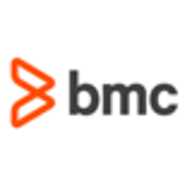


Find out what your peers are saying about BMC, Broadcom, Redwood Software and others in Workload Automation.


Automic Automation is employed for migration assistance, digital business automation, integration with platforms, ITIL process workflows, batch processing, disaster recovery, scheduling ERP batch jobs, and automation within finance and telecom sectors.
Businesses implement Automic Automation across on-premises and cloud infrastructures, supporting SAP, mainframes, host systems, and other environments. Valued for its versatility and out-of-the-box integration capabilities, it enhances automation efficiency and reduces operational costs. The platform is known for its robust object-oriented workflow, zero-downtime upgrades, CI/CD pipeline integration, and multi-client architecture. Enhanced stability, scalability, user-friendliness, and compliance are notable benefits.
What are the key features?Automic Automation is widely used in finance and telecom industries, addressing unique challenges and demands. It integrates with Broadcom products and supports SAP environments, ensuring well-rounded automation and operational efficiency. While technical support and vendor assistance could improve, businesses find value in its scheduling, deployment options, and workflow visibility. The industry's capability to manage cloud systems and SaaS deployment helps in mitigating disaster recovery issues and facilitates smoother ITIL process workflows.
BMC Compuware ThruPut Manager automates batch job scheduling, optimizes mainframe workload management, and enhances job processing efficiency. It reduces CPU consumption, improves throughput, and provides detailed reporting, prioritizing jobs based on business needs.
BMC Compuware ThruPut Manager is known for its capability to streamline complex systems, allowing seamless integration with existing mainframe environments. It plays a crucial role in reducing operational costs and minimizing manual interventions. Users highlight its workload automation, intelligent resource management, real-time monitoring, and robust analytics features. Despite its advanced functionalities, there are areas needing enhancements such as better automation capabilities, clearer documentation, and an intuitive setup process. More comprehensive training resources and improved technical support are also needed.
What are the key features of BMC Compuware ThruPut Manager?BMC Compuware ThruPut Manager is implemented across various industries to streamline mainframe operations. Financial sectors utilize it for efficient transaction processing, telecom companies for managing large-scale data, and retail businesses for handling extensive inventory and sales operations. Its ability to integrate with existing systems makes it adaptable to specific industry requirements.
Control-M is used for enterprise workload automation, orchestrating finance, retail, healthcare, and supply chain processes. It handles batch job scheduling, managed file transfers, cloud integrations, and compliance auditing across on-premises, cloud, and hybrid environments.
Organizations leverage Control-M to efficiently monitor and manage business-critical processes like payroll, HR, SAP, Informatica, and database tasks. It enhances visibility, security, and error resolution. Automating and optimizing workflows in data centers, AWS, Azure, and Google Cloud Platform, Control-M supports diverse technological environments. The platform's robust capabilities make it suitable for effective centralized management of applications and data pipelines, ensuring enhanced collaboration and scalability.
What are Control-M's most important features?Control-M is implemented in industries like finance to handle payroll and HR tasks, in retail for inventory management and supply chain processes, and in healthcare for compliance auditing and patient data processing. Organizations benefit from streamlined workflows and automated processes across on-premises, cloud, and hybrid environments, ensuring efficient and secure operations.